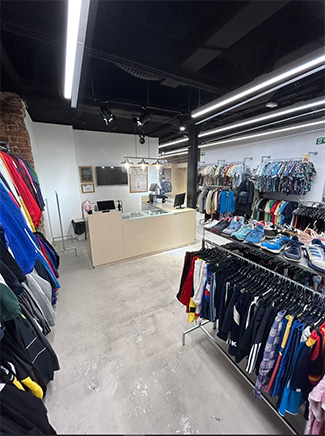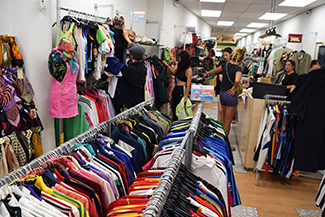consent_cookie
Duración: 1 year
Stores the user's cookie consent state
16-05-2023
Six out of 10 garments that pass through Humana Fundación Pueblo para Pueblo's preparation for reuse (PxR) plants have a new life through reuse, a proportion that increases to 90% by adding recycling processes.
With 36 years of experience, the non-profit entity insists on the correct separation of textile waste at source and on prevention and reuse as key factors in the fight against climate change. This is revealed on World Recycling Day: promoted every May 17 by UNESCO, it is a day to raise awareness among the population about the importance of generating less waste to reduce the carbon footprint.
The European Confederation of Recycling Industries (EuRIC) published last January a report on the evaluation of the life cycle of used textiles, at a European level. The bottom line is that reusing is better for the environment than producing new garments, and in most cases better than recycling as well.
Loyal to the EU Waste Hierarchy
"As specialists in preparing for reuse, our goal is to get the most out of textile waste, being faithful to the EU Waste Hierarchy, which places prevention and reuse ahead of recycling and disposal," says Rafael Mas. , Director of Projects and External Relations at Humana.
The entity recovered 17,845 tons of used textiles in Spain in 2022, equivalent to 72 million garments. It has two PxR plants (in Leganés -Madrid- and l'Ametlla del Vallès, in Barcelona), where the percentage of processed textile destined for reuse has increased compared to previous years, thanks to the implementation of increasingly specific criteria in your classification process.
Destination of the textile prepared for reuse
The destination of the garments classified is as follows:
The management of used textiles is experiencing a momentous moment: the EU Strategy for Circular and Sustainable Textiles and Law 7/2022, of April 8, on Waste and Contaminated Soils for a Circular Economy, together with the European Waste Hierarchy, they mark the roadmap for a new era in the fashion and textile industry.
How much clothing is recovered in Spain
Humana recovered 17,845 tons of used textiles in Spain in 2022: equivalent to 72 million garments whose management has extended their useful life. This implies a double benefit: the first is environmental, because it reduces the generation of waste and prevents it from ending up in a landfill.
In addition, for each kg of clothing recovered and not taken to a waste treatment center for incineration or final disposal, the emission of 6.1 kg of CO2 is avoided, according to a study by the People to People Human Federation. In this sense, the recovery of textile waste by Humana avoided the emission of 108,855 tons of CO2 last year.
The second benefit is social: it consists in the creation of green jobs. With a workforce of 650 people, the entity generates one job for every 30,000 kg of recovered textiles. On the other hand, the resources obtained are allocated to social projects: after more than three decades of activity, 2.4 million people have benefited from development projects in the countries of the South in the hands of counterparts or local partners.
_web.jpg)

